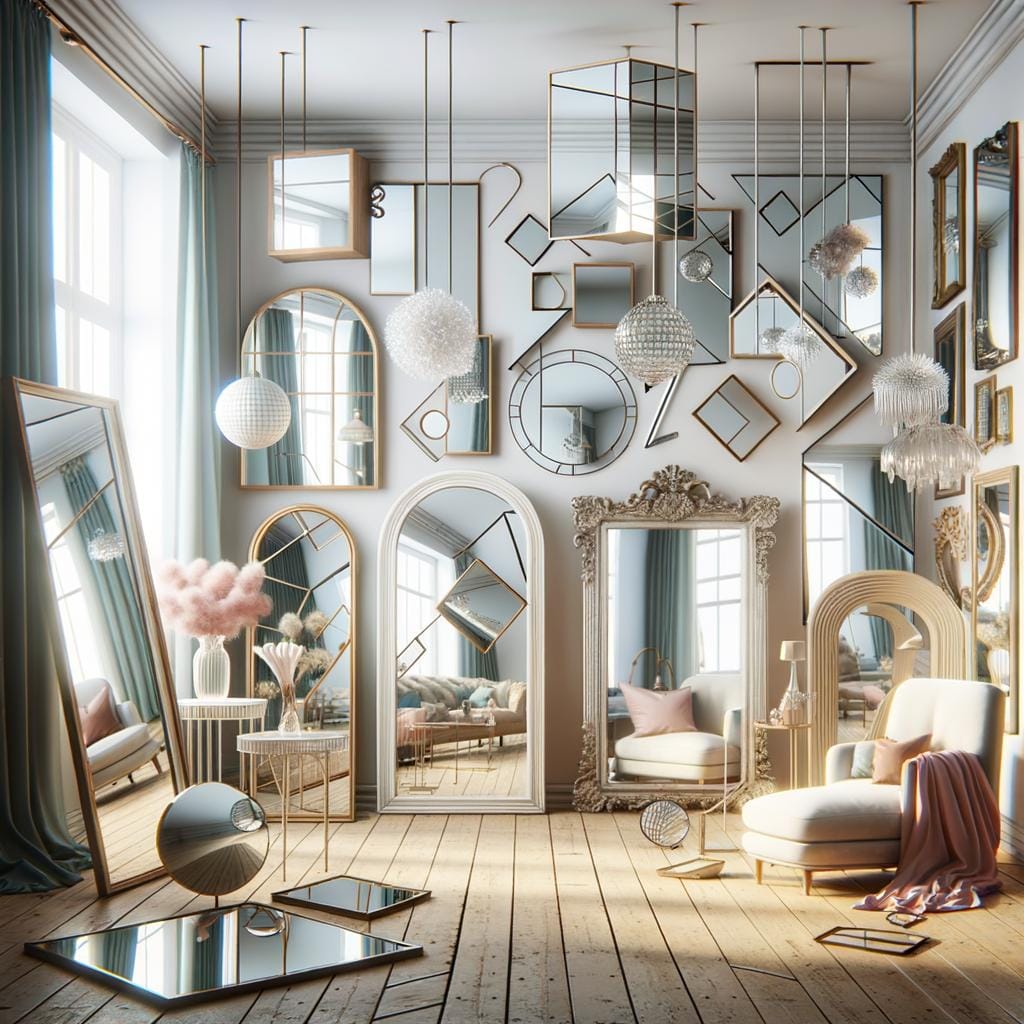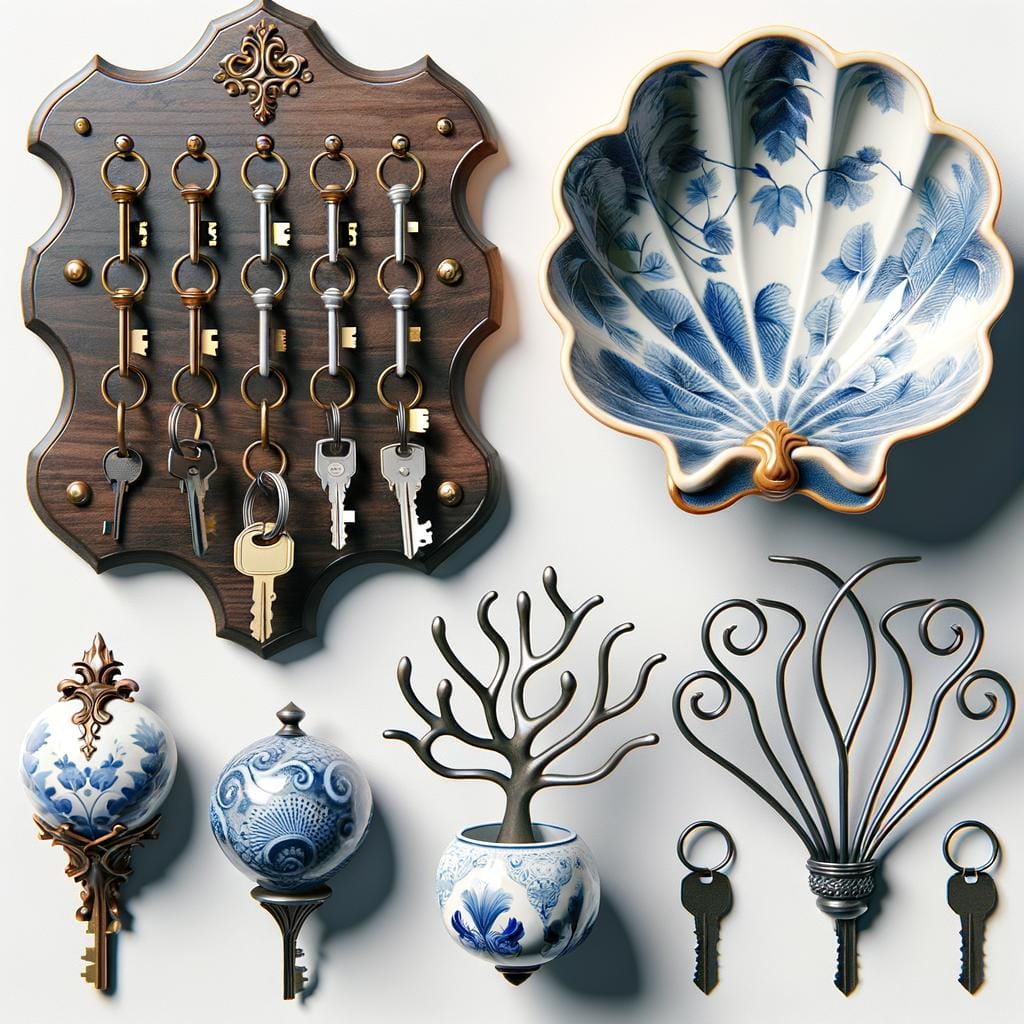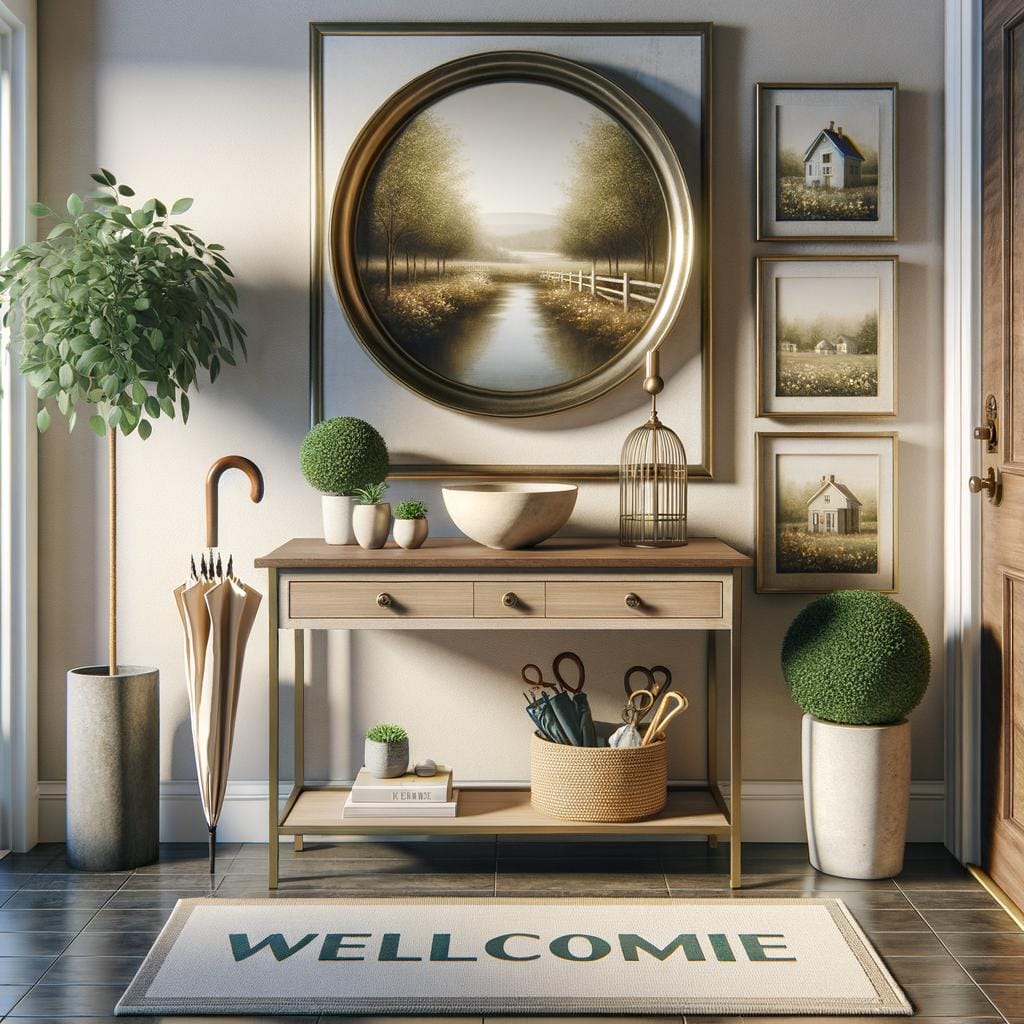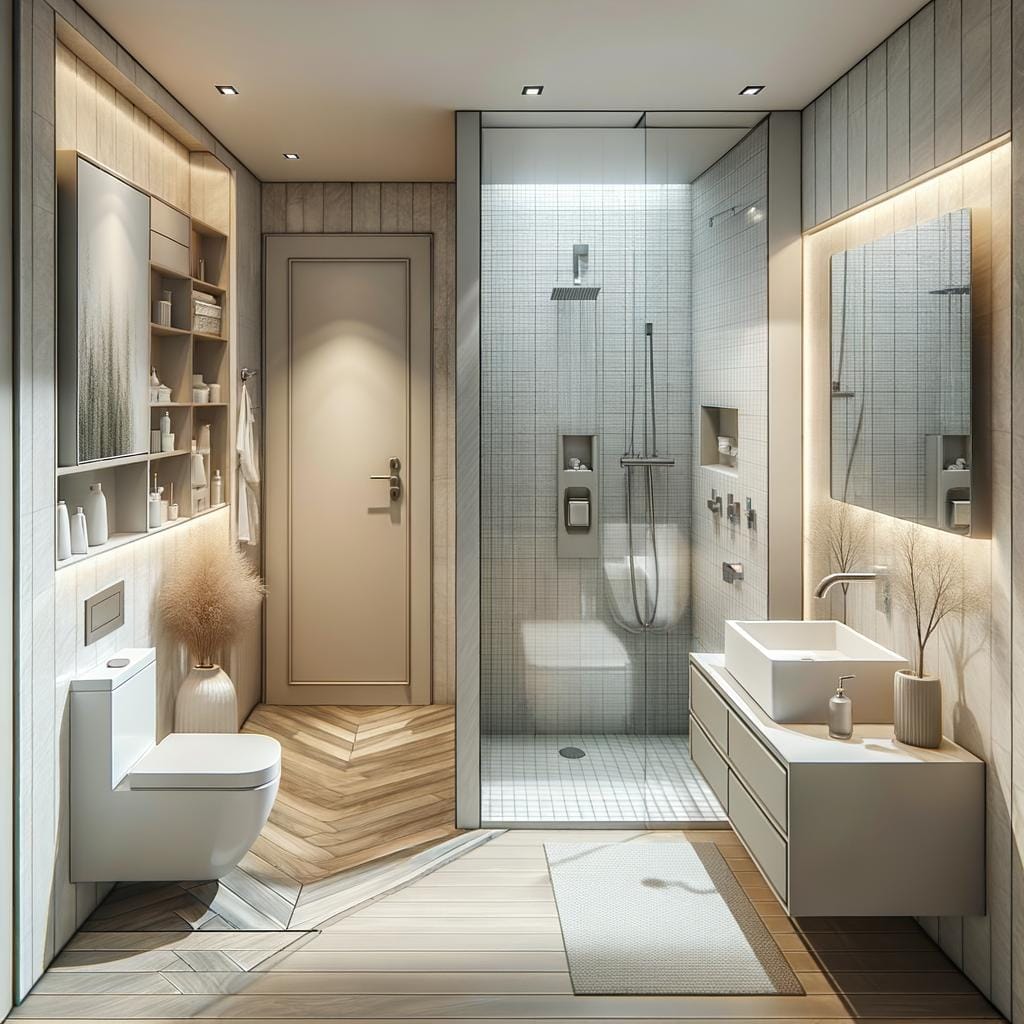Mirror placements play a crucial role in interior design, serving as both functional and decorative elements that can transform the look and feel of any space. Whether it’s creating the illusion of more space, enhancing natural light, or adding a touch of elegance, mirrors are versatile design tools that can be strategically placed to achieve various aesthetic goals.
Throughout history, mirror placements have evolved across different cultures, showcasing the diverse ways in which mirrors have been used for both practical and symbolic purposes. From ancient civilizations to modern-day interior design trends, the placement of mirrors has varied widely, reflecting the cultural beliefs and stylistic preferences of each era.
In this article, we will explore the significance of mirror placements in interior design, delving into the history of mirror placements, discussing different types of mirrors used for various placements, and providing tips and ideas for placing mirrors in living rooms, bedrooms, bathrooms, hallways, and other areas of the home. By understanding the dos and don’ts of mirror placements, you can harness the transformative power of mirrors to create visually stunning and harmonious spaces.
History of Mirror Placements
Mirrors have played a significant role in interior design across various cultures and time periods. The history of mirror placements dates back to ancient civilizations, where mirrors were often associated with spiritual beliefs and superstitions. In ancient Egypt, for example, mirrors were considered sacred objects that could ward off evil spirits and protect the soul in the afterlife. Similarly, in ancient China, mirrors were believed to have the power to reflect both positive and negative energies within a space.
As time progressed, mirror placements evolved to serve not only spiritual purposes but also aesthetic and functional roles. During the Renaissance period in Europe, large ornate mirrors were used as decorative pieces in grand palaces and castles. These mirrors often featured intricate designs and frames made of precious metals such as gold and silver. In Victorian England, mirrors became a symbol of wealth and luxury, with elaborate mirror placements adorning the walls of stately homes.
In modern times, mirror placements continue to be an essential element of interior design, used to create illusions of space, enhance natural light, and add visual interest to a room. From minimalist frameless mirrors to oversized statement pieces, there are countless options available for incorporating mirrors into any decor style.
Whether it’s adding a floor-to-ceiling mirror in the hallway to make it appear larger or strategically placing a mirrored wall panel in the living room to reflect natural light, the possibilities are endless when it comes to using mirrors creatively in interior design.
- Ancient civilizations used mirrors for spiritual purposes
- Renaissance Europe saw the use of large ornate mirrors for decoration
- Modern mirror placements focus on creating illusions of space and enhancing natural light
Types of Mirrors
Mirrors come in various shapes, sizes, and styles, making them versatile elements in interior design. When it comes to mirror placements, choosing the right type of mirror is crucial to achieve the desired aesthetic and functionality. One popular type of mirror is the classic rectangular mirror, which can be used in living rooms, bedrooms, bathrooms, and hallways. These mirrors are timeless and can easily blend with different decor styles.
For a more modern touch, you may opt for round or oval mirrors. These shapes add a softness to a room’s overall look and are great for creating visual interest. Round mirrors work well in entryways or above consoles, while oval mirrors can be a stylish choice for bathrooms or bedrooms. Additionally, consider using mirrors with unique frames or decorative details to add personality and charm to any space.
Another option to explore is using statement mirrors such as sunburst mirrors or geometric-shaped mirrors. These bold designs can serve as focal points in a room and create a sense of drama. Statement mirrors are perfect for hallways or living rooms where you want to make a design statement. Remember that when choosing different types of mirrors for specific placements, think about not only the style but also the size and scale to ensure they complement the space effectively.
Mirror Placement in Living Rooms
When it comes to mirror placements in interior design, the living room serves as a crucial space where mirrors can have a significant impact. Mirrors in living rooms not only add aesthetic appeal but also contribute to the overall atmosphere and functionality of the room. By strategically placing mirrors, you can enhance natural light, create the illusion of more space, and even improve the flow of energy in the room.
Here are some tips and ideas for effectively placing mirrors in living rooms:
- Consider placing a large mirror on a focal wall to visually expand the space and make the room feel more open.
- Use mirrors to reflect natural light from windows or artificial light sources to brighten up darker areas of the room.
- Experiment with different shapes and sizes of mirrors to create visual interest and complement the existing decor style.
- Avoid placing mirrors directly opposite each other as it can create a distracting reflection effect.
Additionally, incorporating decorative frames or unique mirror designs can serve as statement pieces that enhance the overall aesthetic of your living room. Whether you prefer a minimalist, modern look or a more eclectic style, mirrors can be used creatively to elevate the design scheme of your living space. By carefully considering mirror placements, you can transform your living room into a visually appealing and inviting area for relaxation and entertainment.
Mirror Placement in Bedrooms
When it comes to designing a bedroom, mirror placements play a crucial role not only in enhancing the aesthetics of the space but also in serving functional purposes. One of the key benefits of strategically placing mirrors in bedrooms is that they can create an illusion of more space, making the room feel larger and airier. Additionally, mirrors can reflect natural light, brightening up the room and making it appear more welcoming.
There are several ways to strategically place mirrors in bedrooms to achieve both aesthetic and functional goals. Placing a full-length mirror on a closet door or wall can not only serve as a practical solution for getting ready but also visually expand the space by reflecting back the room. Another popular option is to hang smaller mirrors above nightstands or dressers to add visual interest while also providing a convenient spot for grooming tasks.
In addition to considering the placement of mirrors, the style and frame of the mirrors should also be taken into account when designing a bedroom. Choosing mirrors with decorative frames or unique shapes can add a touch of elegance or personality to the space.
Furthermore, mixing and matching different sizes and shapes of mirrors can create a visually appealing focal point in the bedroom. By carefully selecting and placing mirrors in bedrooms, homeowners can transform their personal sanctuary into a stylish and functional retreat.
| Benefits | Tips |
|---|---|
| Create an illusion of more space | Choose full-length mirror for closet doors |
| Reflect natural light for brightness | Hang smaller mirrors above nightstands/dressers |
| Add visual interest | Select decorative frames or unique shapes |
Mirror Placement in Bathrooms
Bathrooms are essential spaces in any home, serving both practical and decorative purposes. When it comes to mirror placements in bathrooms, they play a crucial role in enhancing the overall look and functionality of the space. Whether it’s a small powder room or a luxurious spa-like bathroom, strategically placing mirrors can make a significant impact.
One key benefit of mirrors in bathrooms is that they create an illusion of more space, especially in smaller bathrooms. Placing a large mirror above the vanity or sink can visually expand the area and make it feel more open and airy. Additionally, mirrors reflect light, making the bathroom brighter and more inviting. This natural light reflection can be especially beneficial if the bathroom lacks windows or adequate lighting.
When considering mirror placements in bathrooms, think about both practicality and aesthetics. Mirrors placed near sinks are essential for daily grooming tasks like applying makeup or shaving. Full-length mirrors behind doors or on closet doors can be convenient for outfit checks before stepping out.
Moreover, incorporating decorative mirrors with unique shapes or frames can add style and personality to the bathroom’s design. Finding the right balance between functionality and visual appeal is key to successful mirror placements in bathrooms.
| Mirror Placement Benefits in Bathrooms | Tips for Mirror Placements in Bathrooms |
|---|---|
| Creates an illusion of more space | Consider placing a large mirror above the vanity to visually expand the space |
| Reflects light, making the bathroom brighter | Incorporate full-length mirrors for outfit checks before leaving |
| Enhances both functionality and aesthetics | Add decorative mirrors with unique shapes or frames for added style |
Mirror Placement in Hallways
In homes with narrow or cramped hallways, strategically placed mirrors can work wonders in creating an illusion of space and adding brightness to the area. Mirror placements in hallways are not just functional but can also be aesthetically pleasing, enhancing the overall look and feel of the space. Here are some creative ways to use mirrors in hallways to make them appear larger and brighter:
Strategic Placement
One effective way to utilize mirrors in hallways is by strategically placing them opposite windows or light sources. This positioning allows natural light to bounce off the mirrors, brightening up the hallway and making it feel more open. Additionally, placing mirrors across from doorways can create a sense of depth, visually expanding the space.
Gallery Wall of Mirrors
For a more decorative approach, consider creating a gallery wall of mirrors in your hallway. Mix and match different shapes and sizes of mirrors to add visual interest and reflect light throughout the space. This not only serves a functional purpose but also acts as a stunning focal point in an otherwise overlooked area of the home.
Mirrored Furniture
Another innovative way to incorporate mirrors into your hallway is by incorporating mirrored furniture pieces like console tables or cabinets. Not only do these pieces provide storage solutions, but they also reflect light and create the illusion of a larger space. Choose furniture with intricate mirror designs for added style and sophistication.
By creatively integrating mirrors into your hallway design, you not only enhance the aesthetics of the space but also improve its functionality. Whether used for practical purposes like checking your appearance before heading out or simply as design elements to brighten up an otherwise dark corridor, mirror placements in hallways can truly transform the look and feel of this often neglected area of the home.
Dos and Don’ts of Mirror Placements
Choosing the Right Size and Shape
When it comes to mirror placements in different areas of the home, one of the crucial factors to consider is the size and shape of the mirror. In living rooms, for example, a large rectangular or oval mirror above a mantel can create a focal point and visually expand the space.
On the other hand, in bedrooms, opting for smaller mirrors on bedside tables or dressers can add a touch of elegance without overwhelming the room. It’s essential to choose mirrors that complement the existing decor and fit well within the available space.
Avoiding Clutter and Distractions
While mirrors can undoubtedly enhance the aesthetics of a room, it’s important not to go overboard with their placements. Avoid cluttering walls with too many mirrors that end up creating visual distractions rather than adding value to the space. In bathrooms, for instance, placing mirrors directly opposite each other may create an awkward reflection effect that can be off-putting. Instead, opt for strategic placements that serve both practical and decorative purposes without overwhelming the design.
Taking Lighting Into Consideration
When placing mirrors in different areas of your home, it’s crucial to take lighting into consideration. Mirrors have the incredible ability to reflect light and brighten up any space, making them perfect for darker corners or hallways. However, it’s important to avoid placing mirrors directly opposite windows or light sources as this may cause glare or uncomfortable reflections.
By strategically positioning mirrors to capture natural or artificial light, you can create a luminous and inviting atmosphere in your home. Remember, thoughtful mirror placements can truly transform your living spaces into stylish and functional areas that you’ll love spending time in.
Conclusion
In conclusion, mirror placements play a crucial role in interior design by not only enhancing the aesthetics of a space but also creating an illusion of openness and brightness. Throughout history, different cultures have used mirrors for various reasons, from reflecting natural light to adding decorative elements to their living spaces. Today, with the wide variety of mirror types available, homeowners have endless options to choose from when it comes to incorporating mirrors into their interior design.
Whether it’s in the living room, bedroom, bathroom, or hallway, strategic mirror placements can truly transform the look and feel of any space. In the living room, mirrors can create the illusion of a larger area and bounce light around to brighten up the room.
Placing mirrors in bedrooms can add a touch of elegance while also serving functional purposes like getting ready in the morning. Meanwhile, using mirrors in bathrooms not only adds a stylish element but also helps with grooming tasks.
When it comes to hallways and other areas of the home, creatively using mirrors can make narrow spaces appear larger and darker corners brighter. However, it’s essential to follow some dos and don’ts when it comes to mirror placements. Avoid placing mirrors directly opposite each other as this can create visual confusion.
Instead, aim for balance and symmetry in mirror placements to achieve a harmonious look throughout your home. By following these guidelines and being mindful of where you place your mirrors, you can truly transform your living spaces and create an inviting atmosphere for all who enter.
Frequently Asked Questions
Where Should Mirrors Be Placed?
Mirrors should be strategically placed in a home to enhance natural light and make spaces appear larger. Placing mirrors across from windows or doors can help reflect light and create a more open feel in a room.
What Are the Rules for Mirror Placement?
When it comes to mirror placement, there are few key rules to keep in mind. Avoid placing mirrors directly facing each other as it can create a visual distraction. Also, make sure not to hang mirrors too high or too low on walls, as they should be at eye level for optimal functionality.
Where Is the Lucky Place for Mirror?
In feng shui, the lucky place for a mirror is often considered the entryway of a home. Placing a mirror near the front door is believed to attract positive energy and opportunities into the space. It is also said that hanging a mirror facing the dining table can symbolize abundance and prosperity in the household.

Hello, I’m April Denton, your go-to expert for all things home decluttering and organization. With over a decade of experience helping individuals transform their living spaces into serene, clutter-free sanctuaries, I am passionate about the life-changing benefits of decluttering. My journey into the world of organization began out of necessity, juggling a busy career and a bustling household. I quickly realized that a well-organized home was the key to a more balanced, stress-free life.





